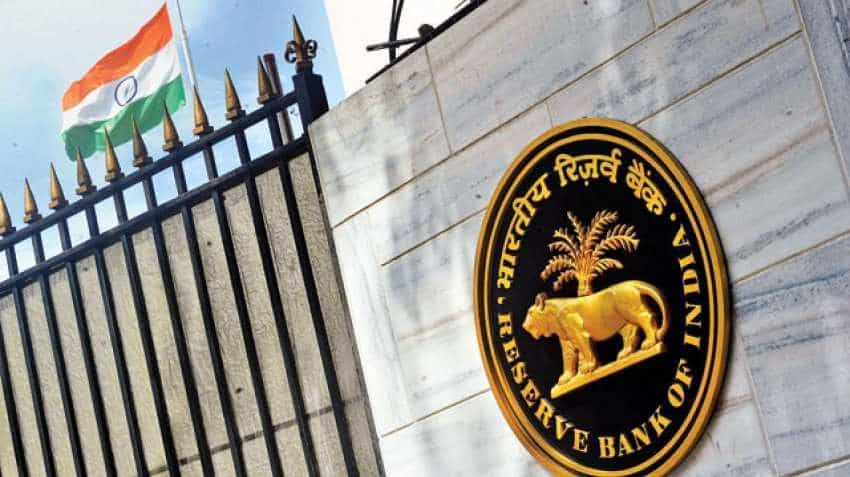Liquidity infusion: RBI may infuse Rs 2 lakh cr during December-March to ease crunch
The RBI had earlier stated that the system liquidity will move into deficit in the second half of 2018-19 and the evolving liquidity conditions would determine its choice of instruments for both transient and durable liquidity management.

Reserve Bank of India (RBI) is likely to increase liquidity infusion in the market, according to debt market sources. The quantum of open market operations (OMOs) may be increased to Rs 50,000 crore a month from December to March 2019 so that there is no deficit in the market during the peak credit growth season, according to treasury experts.
OMO is a process by which the central bank buys bonds from the banks and injects liquidity in the banking system.
“In the last three months, RBI has infused close to Rs 65,000 crore of liquidity through OMOs, but the banking system continues to be in a deficit mode so it is likely that the quantum of liquidity will be increased,” said an treasury official.
The RBI had earlier stated that the system liquidity will move into deficit in the second half of 2018-19 and the evolving liquidity conditions would determine its choice of instruments for both transient and durable liquidity management.
“We expect the RBI to step up OMO to Rs 50,000 crore a month between December-March to arrest further lending rate hikes,” Bank of America said in a report.
RBI after its Board meeting on Monday said it will inject Rs 8,000 crore into the system through the purchase of government securities on November 22.
“Based on an assessment of prevailing liquidity conditions and also of the durable liquidity needs going forward, RBI has decided to conduct purchase of the following government securities under Open Market Operations for an aggregate amount of Rs 8,000 crore on November 22, 2018,” the central bank said in a release on Monday.
RBI has also reduced the capital requirements, especially for the banks under prompt corrective action through its decision to extend the timeline for implementation of the last tranche of capital conservation buffer under Basel III. This, according to rating agency Crisil, is expected to reduce the burden on public sector banks in this fiscal by around Rs 35,000 crore.
This is also expected to give some relief to the government as the weak banks are wholly dependent on the government for their capital considering that PCA restricts their lending activities and hence their earning capacity.
Kotak Institutional Equities in a report said, “Our calculation suggests that the government has probably received a relief of $1.7 billion because of the delay in transition as they would have had to infuse this capital by FY2019.”
“The overall capital infusion to meet the guidelines now stands reduced (assuming the current CAR) to $2.7 billion as compared to $4.4 billion earlier,” it said.
This story first appeared in DNA Money: RBI may infuse Rs.2 L cr to ease crunch
Get Latest Business News, Stock Market Updates and Videos; Check your tax outgo through Income Tax Calculator and save money through our Personal Finance coverage. Check Business Breaking News Live on Zee Business Twitter and Facebook. Subscribe on YouTube.
RECOMMENDED STORIES

SBI 444-day FD vs PNB 400-day FD: Here's what general and senior citizens will get in maturity on Rs 3.5 lakh and 7 lakh investments in special FDs?

Power of Compounding: How long it will take to build Rs 5 crore corpus with Rs 5,000, Rs 10,000 and Rs 15,000 monthly investments?

Looking for short term investment ideas? Analysts suggest buying these 2 stocks for potential gain; check targets

Small SIP, Big Impact: Rs 1,111 monthly SIP for 40 years, Rs 11,111 for 20 years or Rs 22,222 for 10 years, which do you think works best?

SCSS vs FD: Which guaranteed return scheme will give you more quarterly income on Rs 20,00,000 investment?
07:10 AM IST









 RBI may face tougher path in February rate cut as Fed reshaped global monetary policy expectations: Report
RBI may face tougher path in February rate cut as Fed reshaped global monetary policy expectations: Report RBI raises collateral-free agricultural loan limit to Rs 2 lakh to aid farmers
RBI raises collateral-free agricultural loan limit to Rs 2 lakh to aid farmers 26th RBI Governor Takes Charge: Sanjay Malhotra sets sights on stability, growth, and trust
26th RBI Governor Takes Charge: Sanjay Malhotra sets sights on stability, growth, and trust How economists view RBI's CRR cut, status quo on rates & stance
How economists view RBI's CRR cut, status quo on rates & stance RBI adds 27 tonnes gold to country's reserve in October: WGC
RBI adds 27 tonnes gold to country's reserve in October: WGC